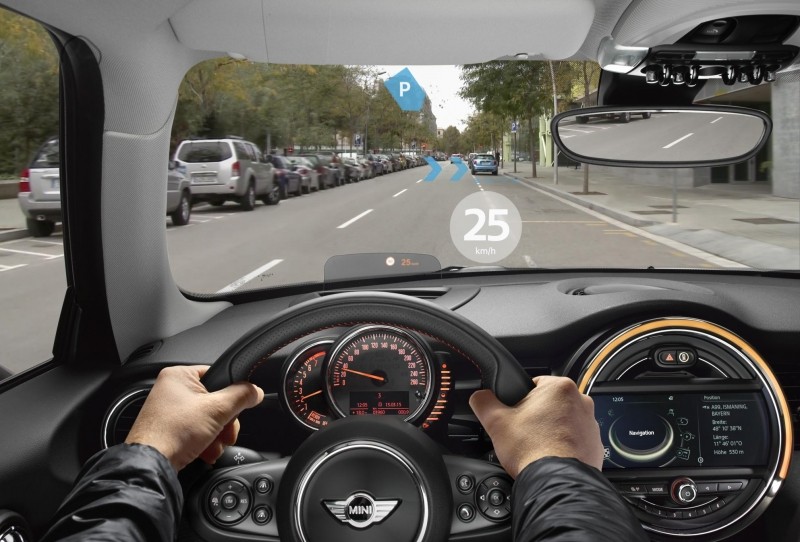
One of the many challenges facing the wearable market is determining what exactly the wearable device can provide that other devices don’t already offer. In other words, they need to answer the question, what do I need it for? In most cases, that perspective is driven by the assumption that the wearable is essentially a standalone device and needs to offer unique capabilities of its own.
But what if that isn’t the case? How about wearables that are specifically designed to work as an accessory or peripheral to another device? I got to experience an intriguing implementation of this idea yesterday when I tried the new glasses offered by BMW’s Mini division, which are powered by Qualcomm’s Snapdragon chips and its Vuforia virtual reality software.
By mixing together the worlds of connected cars, wearables, and virtual reality in a single demonstration, the two companies managed to both create a trifecta of the tech industry’s hottest trends, and offer a different take on the near-term future of wearables and connected cars.
Essentially, Mini was demonstrating a prototype of Android-powered smart glasses that was conceptually and functionally similar to Google Glass but differed in its intended use. Instead of being primarily designed as a standalone device—though they did demonstrate some capability there—the Mini glasses were specifically targeted as a smart car peripheral. The glasses communicate with the car via WiFi when you get into it, and provide a new twist on a heads-up display for the car’s navigation system and other functions.
In the demonstration, the glasses offered a see-through view of the real-world, overlaid with things like your current speed and directions fed from the car’s own systems. Though the technology clearly still needs some refinement, it offered a number of interesting possibilities. For example, leveraging external cameras mounted on the car, the glasses provided what the demonstrators called an “x-ray view” that let you see things like how close your front wheel was to the curb as you parked, or how close a runaway ball was to your car. It’s easy to imagine this expanding to essentially a 360-degree version of the increasingly popular backup cameras now found on most newer cars.
It’s the combination of multiple ‘smart’ devices that really makes the possibilities of the Internet of Things (IOT) an exciting future to look forward to.
In addition, the demonstration leveraged some other capabilities of Qualcomm’s Vuforia software platform, such as the ability to look at a sign or poster and have it come to life with additional data or other visualizations. The prototype also featured the ability to gather information from cameras built into the glasses, such as an address on a poster or other visual display, that can then be fed back into the car’s navigation system. All of these clearly demonstrated how this system is a step beyond many of the stationary heads-up displays that several newer cars are starting to incorporate.
At the moment, there’s no tie between the glasses and any automated driving features, although discussions with some of the designers and engineers suggested that those are things they are looking into for future iterations.
More importantly, what this demonstration made me realize is that there are some compelling opportunities for wearables, but not necessarily as standalone devices. At the same time, despite all the talk of inroads by Apple and Google into the connected car market, it further solidified my belief that carmakers still have a strong hand when it comes to providing the key “smart” elements in their automobiles, because of the critical links that only they can provide to key components in their cars. Best of all, it was one of the best demonstrations yet of how the combination of multiple “smart” devices really makes the possibilities of the Internet of Things (IOT) an exciting future to look forward to.
Bob O’Donnell is the founder and chief analyst of TECHnalysis Research, LLC a technology consulting and market research firm that provides strategic consulting and market research services to the technology industry and professional financial community. You can follow him on Twitter @bobodtech. This article was originally published on Tech.pinions.
https://www.techspot.com/news/60433-wearables-connected-cars-iot-heaven.html